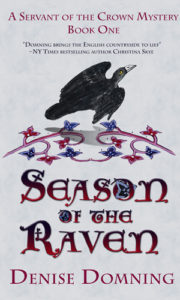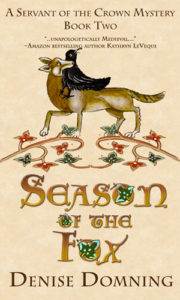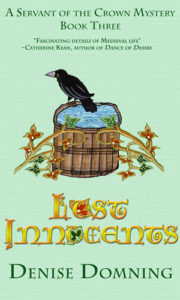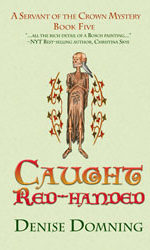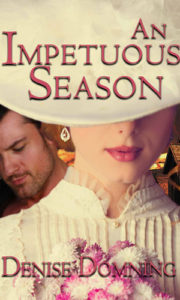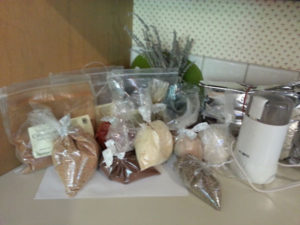Worm-free
I wasn’t a helicopter parent with my kids, and I’m not a helicopter farmer when it comes to my animals. I’d rather watch and wait to treat something until I’m sure the animal can’t handle it on her own rather than dose proactively. A couple of weeks ago the moment for treating arrived for Tiny, my oldest ewe.
Shortly after she gave birth to her lambs she began to look like she had Scours. That’s diarrhea to you and me. I started checking her eyes, pulling down her lower external lid to look at her internal eyelid. Checking that eyelid is a good way to see if they have blood-sucking internal parasites. At my first check, her inner lid was bright red. Anything paler than that means something is definitely amiss.
She kept having her problem and I kept checking. Everything was rosy for awhile. More importantly, none of the other sheep had the same problem and it seemed to me that if one sheep has parasites, they all should. So I attributed Tiny’s difficulty to her fiendishly clever ability to break into any place that has the food or goodies she loves–chicken food, black-oil sunflower seeds, and my gardens–but give her diarrhea.
At the same time I worked to tighten security, switching from bungee cord closures to chains, from chains to baling twine, etc. When I was certain she was finally locked away from everything, I checked her eyes again. Sure enough, this time when I pulled down her lower eyelid that inner lid was a pale pink. It was time for a dewormer.
The last time I’d used a dewormer on my animals I still had cows. It was an herbal mix that included cayenne, cloves, garlic, and a few other spices. As awful as it sounds, the package said it was good for fowl and all mammals, including humans. In the spirit of discovery, I gave it a try. It was horrible even if I mixed my dose into a cup of raw milk sweetened with my blackberry shrub. I held my nose and drank fast, and hated it except that it made me feel amazing.
So last week, I went online to find the same stuff and couldn’t, which was disappointing. Then I realized I had a freezer full of spices. Hmm. Was this something I could make myself?
I hurried to my favorite recipe book (Google) and did a search. Sure enough, I came up with mix that I thought was similar from a farm site where they also raise sheep. What caught my eye was the suggestion to make dosage balls with molasses. That seemed the perfect way to convince a sugar-addict like Tiny to take it.
I had most of the spices and herbs in my freezer or in the garden. I got the anise and psyllium at Mt Hope, my local co-op, and found the wormwood online with free next-day delivery. The black walnut hull wasn’t available for weeks, but after reading that it was dangerous for horses or pregnant animals, I decided to forgo it. This was, after all, an experiment. I figured the worst thing that would happen was the sheep would burp cloves and the parasites would live on, and I’d have to run to the feed store for a conventional dewormer.
That night I ground and mixed up the herbs and spices. Note to self: when grinding cayenne peppers, even in a grinder with no way to send the powder into the air, a mask is probably a good idea. Cough, hack. Even my nose burned.
The next morning I measured out what I needed to make the dosage balls for that day. I considered wearing gloves, then didn’t. It wasn’t necessary. This was gooey and nothing more. I went down to greet my unsuspecting sheep with a dose for both Tiny and Mari. The babies are still nursing so what their mamas eat, they get as well.
Tiny gobbled down her first dose. Yay! Mari sniffed and looked at me as if to say, “You’ve got to be kidding!” Dang.
That evening I came down with enough for both of them again. This time, Tiny turned up her nose and Mari turned her back. I was undeterred. I climbed the hillside and harvested Pakistani mulberries, then mushed the long sweet berries into the dose balls and tried again. That did the trick, but my hands were purple for a day afterwards. There had to be a better solution.
I tried more molasses the next day. They snapped up the morning dose and turned their back on the evening dose. Purple hands again.
The next day I looked in the cabinet and the light bulb over my head lit up when I saw the agave syrup. I added a drizzle over the balls and mushed it in. The result was very sticky–the doorknob of my barn door is still tacky– but it worked! Even Mari didn’t hesitate to snarf down her dose. That left little Rose looking up at me, wondering what she was missing.
That evening, I again coated the balls in agave, then had the even more brilliant idea to roll them in a little of the cracked corn I feed the chickens. You’d have thought I was offering them a bucket full of Pakistani Mulberries. Rosy demanded a bite and the other three lambs were crowding the fence, sniffing and begging.
It’s been a full seven days now and Tiny’s Scours are gone. I’ll dose her again starting with the new moon for another seven day course as I’m told that’s when the parasite eggs hatch. You know, I might just see what this stuff tastes like mixed with milk and shrub. I bet I still have to hold my nose.
(About food-grade Diatomaceous Earth (DE) First, this is not the stuff you use in your pool filter. Food-grade DE is totally edible if somewhat unpalatable. Okay, completely unpalatable. It tastes like chalk. I know this because I tried it. If you’re a human, it’s easier to take a Silica tablet. There’s been some discussion about how eating DE doesn’t really help with deworming because the DE changes in the digestive track. This may be true, but it’s not going into you to cut up the bugs the way it does if they walk through this on your floor. Instead, it’s delivering Silica to your system. Silica is a vital trace mineral that is presently missing in our food supply due to soil depletion because of our industrial farming practices. Since we’re all deficient in Silica, including our animals, adding it can only do them good.)
HERBAL DEWORMER
1/2 cup whole or powdered Cloves
1 cup Anise Seed powder (optional)
1 cup Cayenne Pepper powder
1 cup Cinnamon powder
1 cup Garlic (powder or minced)
1 cup Ginger Root powder
1 cup Mustard seed powder
1 cup Psyllium seed powder
1 cup Rosemary leaf powder
2 cups Sage leaf
2 cups Thyme leaf
2 cups Wormwood (do not use with pregnant animals)
2 cups food-grade Diatomaceous Earth
Mix all ingredients together and store in a glass jar. Keep in a cool, dark place. Dose animals for seven days, morning and evening, starting with the first night of the full moon. Repeat two weeks later with the new moon.
DOSE BALLS:
1/2 cup (8 Tablespoons) herb mix
1/4 cup (4 Tablespoons) flour to bind
1/4 cup Molasses (can substitute Honey OR use 1/2-2/3 cup organic Peanut Butter)
drizzle of light Agave syrup
enough cracked corn to coat
Mix all ingredients on a sheet of waxed papers, kneading with your fingers until it’s dough-like. Roll into a log and break into 12 even pieces, then shape them into balls. Separate out the number of balls for each animal’s dose, drizzle with agave syrup, then roll in cracked corn until coated.
The dosage is 1 teaspoon per 30 pounds or 1 tablespoon for 100 pounds. Each ball equals approximately 2 teaspoons. It’s better to overdose a little than it is to give too little, so err on the generous side.
Disclaimer: I’m offering this as anecdotal information. It’s not intended to diagnose, treat, cure, mitigate, or prevent any disease. The information on this site is based on the traditional and historic use of herbs as well as personal experience and is provided for general reference and educational purposes only. It is not intended to diagnose, prescribe or promote any direct or implied health claims.
The information and statements presented on this site have not been evaluated or approved by the FDA or USDA. The use of herbs and essential oil for the prevention, treatment, mitigation or cure of disease has not been approved by the FDA or USDA. I therefore make no claim to this effect. I am not a veterinarian or a doctor. This information is not intended to replace professional veterinary and/or medical advice. You should not use this information to diagnose or treat any health problems or illnesses without consulting your vet and/or doctor. I present the information without guarantees, and disclaim all liability in connection with the use of this information. Any person making the decision to act upon this information is responsible for investigating and understanding the effects of their own actions.

